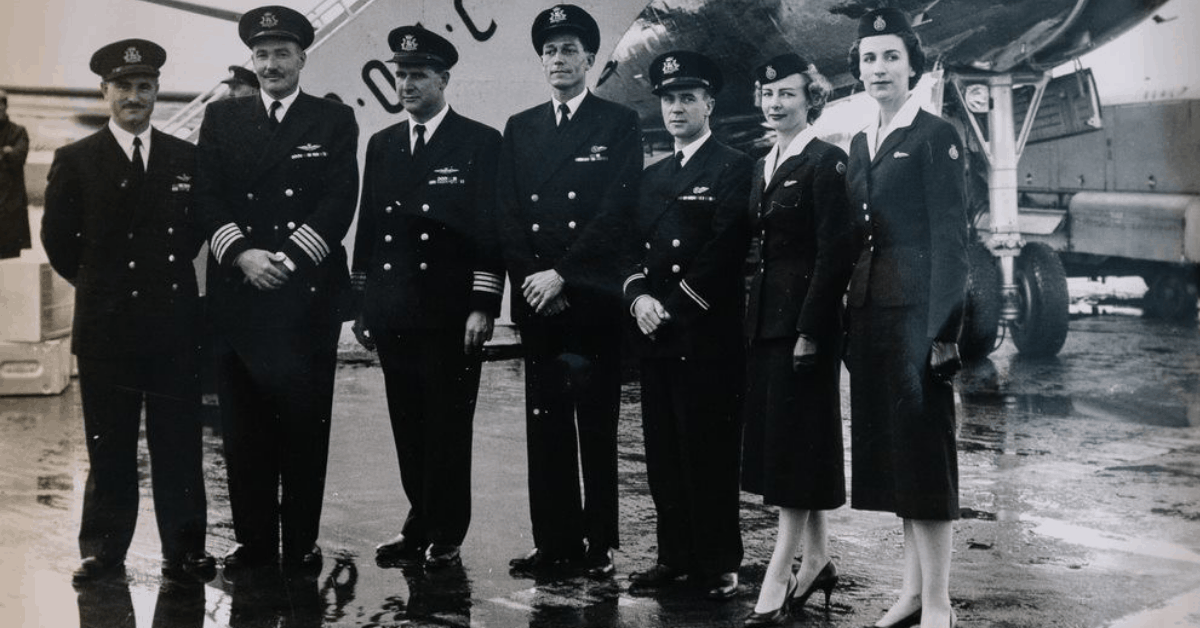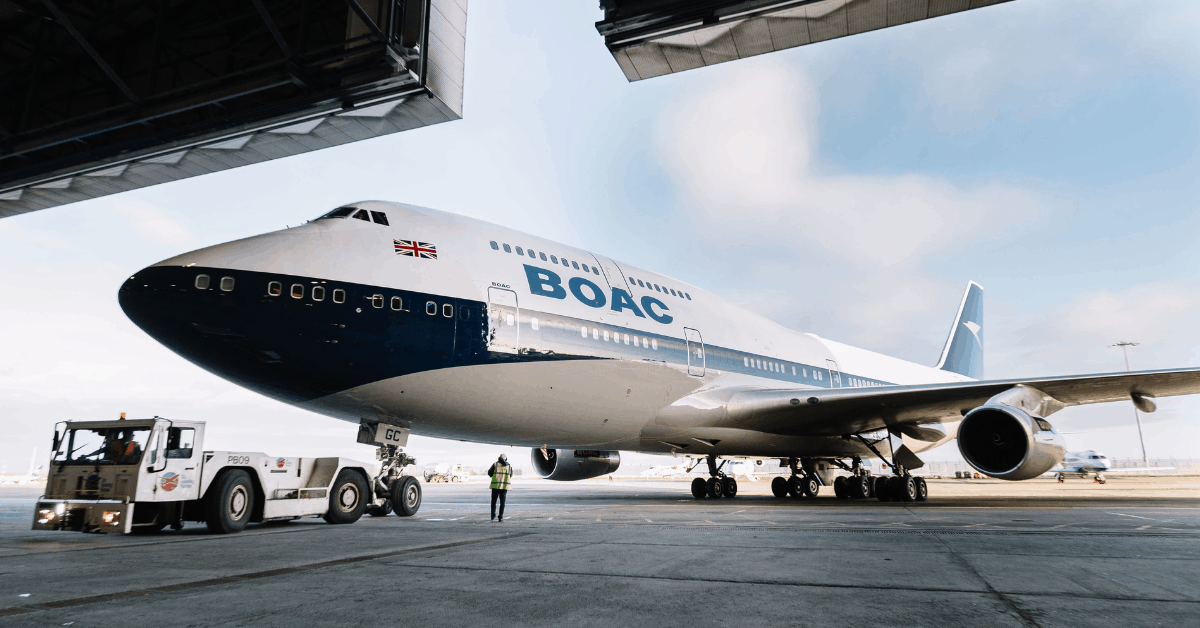While it sometimes feels as though the golden age of flying has ended, the truth is that air travel today is as good as it’s ever been.

It’s easy to feel nostalgic for the 60s and 70s when air travel was still a novelty. The cocktails were free-flowing and flying was a special event, with passengers donning suits and mink coats for the occasion.
You could arrive at your departure gate mere minutes before boarding to take to the skies in a comfy, spacious seat with plenty of legroom. Airlines today are even capitalizing on this nostalgia, bringing back classic paint jobs for aircraft to invoke a feeling of old-school glamor.
While we may no longer enjoy certain creature comforts that were once commonplace on board, the trade-offs are well worth it. Flying is much more affordable compared to a few decades ago and with faster and more frequent routes, we have better flying options than ever before.
We’ve summarized a few of the ways in which air travel has changed over the past century, from the beginnings of commercial aviation through to today, where more than 100,000 commercial flights are completed on average worldwide each day.
The role of the flight attendant
Whether they’re performing a safety briefing, checking you’ve buckled up, or serving you a snack, flight attendants have always been an important part of air travel. What’s not commonly known is that back in the 1920s when commercial air travel was just starting to take off, the role of the flight attendant was quite different.
During this period, the general public was not used to the idea of flying and for many, the concept was unfamiliar and frightening. By 1930, in a bid to make passengers feel safe, United Airlines started employing registered nurses who were stationed on-board. It was their job to calm passengers and put them at ease with regards to the perceived dangers of flying.
By the 60s and 70s, air travel had become widely accepted as a safe and convenient mode of transport and a medical background was no longer a requirement for flight attendants. The job had morphed to include the role of hostess. Flight attendants were almost exclusively female, serving food and drinks, and making sure guests were safe and had a good time.
Job descriptions issued by airlines at the time certainly wouldn’t fly in 2019. A leaflet from British Overseas Airways Corporationfrom 1965 listed its requirements for flight attendants, which included a “neatly proportioned figure” and “pleasing appearance”. In addition, applicants had to be single and aged between 21 and 27. Flight attendant uniforms were often figure-hugging and restrictive, worn with high heels, and accompanied by strict rules regarding hairstyles and makeup.
Airlines often boasted the good looks of their air hostesses, using it as a marketing strategy. Braniff Airways used the tagline “Does your wife know you’re flying with us?”,while Pan Am
Thankfully, the role of the flight attendant today is much more inclusive, a result of shifting attitudes and the introduction of equal opportunity employment. More and more men are taking on the role, and although there’s still plenty to be rectified with regards to workplace gender equality, the rules around uniforms and appearance for women are loosening.
Female cabin crew for British Airways won the right to wear pants instead of a skirt in 2016 and as of March, Virgin Atlantic dropped mandatory makeup for female cabin crew.
Service was five star
The 1950s and 60s were considered the “golden years of air travel”. The world’s economy had largely recovered from World War II, and households had more money to spend on travel and leisure. While flying was still very expensive and considered a luxurious mode of transport, it was becoming an increasingly attainable option for the upper and middle classes.
Food and drinks served on-board reflected this luxury status and were a far cry from the bland fare that often gets served up today. Although to be fair, some airlines are starting to offer higher quality options to their passengers.

Those flying with National Airlines in 1968 from Miami to San Francisco enjoyed a smorgasbord of culinary delights during their flight. Guests were served elaborate cocktails such as the Florida Flip and the Orange Blossom, alongside hors d’oeuvres and a chilled shrimp mignonette. The main course was Chicken Kiev or filet mignon with salad and vegetables, followed by key lime pie and french pastries for dessert.
Guests dressed to match the five-star service they received on board. Three piece suits were commonplace and women dressed to impress in high heels and fine jewelry. Flash-forward to today and flight attire is geared more toward comfort with track pants, trainers, and comfy sweaters. Even sleepwear is a go-to option for some.
Seats used to be much roomier
Do you ever get the feeling as your buckling up, that your legroom is shrinking? Your concerns may be justified, as its well documented that airlines have been shaving inches off seat widths and seat pitch over the last 30 years.
As a result of increased competition, airlines are squeezing more and more customers onto flights in order to make a profit while still offering affordable ticket prices.
Last year, the U.S. Federal Aviation Administration was ordered by a U.S. court judge to look into the matter of shrinking seat sizes, after an advocacy group raised the issue. According to the group, airline seats had been steadily decreasing in size over the past 30 years, with the average economy seat pitch, the distance between your seat and the one in front, shrinking 10 centimeters over the past four decades, from an average of 35 inches (89 cm) in the 70s, down to a cramp-inducing 31 inches (79 cm) today.
A new U.S. bill was passed in 2018 as a result, to prevent airlines from shrinking their seat width and pitch beyond their already ,meager proportions. However, the legislation states that seats on U.S. passenger flights only need to be safe, not comfortable, meaning we’re stuck with pint-sized economy seating for the foreseeable future.
Plane routes could take days
If you think the 23 hours of flight time it takes to get from London to Sydney today is hard to stomach, then consider the equivalent route 70 years ago.
Commonly referred to as the “kangaroo route”, the journey from London to Sydney in 1947 took an incredible four days, which included four stops for refueling and two overnight stays on land. By the time passengers arrived in Sydney, they had spent a total of 55 hours in the air and had transited through Darwin, Singapore, Calcutta, Karachi, Cairo, and Tripoli. A return ticket wasn’t cheap, costing £650 GBP, which was more than twice the UK average wage at the time.
Thankfully, air travel is now faster, cheaper, and more convenient. Technological advancements have allowed planes to fly at higher speeds and for longer periods without refueling. Today, you can fly the kangaroo route with a single stopover, costing you as little as £700 GBP ($920 USD) for a return fare.
Airport security was basically non-existent
If you’re a frequent flier, then you’ll have wasted a fair few hours dealing with airport security. Passing through metal detectors and full-body scanners, carefully placing all your liquids into a clear plastic bag, and waiting patiently for your bag to be scanned often takes up precious time.
Security levels weren’t always this stringent. If you were flying
Things started to change in the 70s after the U.S. experienced a sharp increase in hijackings. Between the years of 1968 and 1972, an incredible 130 American planes were hijacked and rerouted to alternate destinations. Pilots were instructed to fully comply to prevent hijackings from turning violent. As a result, metal detectors and luggage screening were introduced, making it harder for passengers to smuggle weapons on board.
Although airline security continued to tighten from the 70s onwards, the high level of airport security we have today is a result of the 9/11 terrorist attacks. Promptly after the tragedy, a security manifesto was drawn up by the U.S. Transportation Security Administration, to ensure a similar attack could never be repeated, and the rest of the world quickly followed suit. The extra time we spend clearing security may seem like a hassle, but it’s thanks to these processes that we enjoy safe and carefree air travel today.




